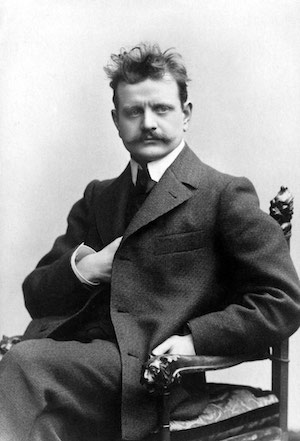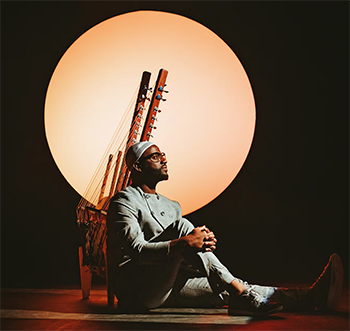by Daniel Hathaway
A mere 19 events are scheduled for this early December weekend.
Saturday’s list includes the Baldwin Wallace Holiday Concert (2 pm in Gamble Auditorium), Stars in the Classics’ Holiday Program (4pm, Church of the Western Reserve), a Baldwin Wallace Aria Concert (7 pm in Gamble Auditorium), the Stow Symphony (7 pm, Tallmadge Bible Church), Apollo’s Fire’s Wassail! (7:30, Chagrin Falls PAC), Oberlin Artist Recital Series presents Kora player Seckou Keita (pictured, 7:30 in Finney Chapel), and The Cleveland Orchestra hosts conductor Pablo Heras-Casado and pianist Emanuel Ax (8 pm at Severance Music Center).
Sunday’s lineup includes the Baldwin Wallace Men’s Chorus Holiday Concert (2 pm & 5 pm in Gamble Auditorium), Parma Symphony (3 pm at Valley Forge High School), Apollo’s Fire’s Wassail! (3 pm, Avon PAC), Canton Symphony (3 pm, Zimmermann Center), Master Singers Chorale (3 pm, First Methodist, Cuyahoga Falls), Western Reserve Chorale (3:30 pm, Church of the Saviour, Cleveland Hts.), Festival of Lessons and Carols (4 pm at Holy Trinity Lutheran, Akron), Firelands Symphony (4 pm at Sawmill Creek, Huron), Lakeland Civic Chorus (4 pm, Lakeland CC, Kirtland), Oberlin Collegium (4:30 pm in Fairchild Chapel), and Oberlin presents Rhiannon Giddens’ Omar (7 pm at the Maltz PAC, Cleveland).
For details of these and other upcoming events, visit our Concert Listings.
WEEKEND ALMANAC:
December 7:
On this date in 1842, the precursor of the New York Philharmonic played its first concert in the Apollo Rooms at 410 Broadway. The Philharmonic Society of New York opened the evening with “Beethoven’s Grand Symphony in c minor,” and in a typical mid-19th century format, went on to a scene from Weber’s Oberon, a Hummel Quintette, the Overture to Oberon, a duet from Rossini’s Armida, a scene from Fidelio, an “Aria Bravura” from Mozart’s Belmont and Constantia (aka The Abduction from the Seraglio), and a “New Overture in D” by Kalliwoda. View the printed program here on the NY Phil’s comprehensive archives website.
And on another shore, on this date in 1898 the Paris Opera-Comique extended its long history by opening its third theater named Salle Favart. (Building No. 2 had been destroyed in a fire on May 25, 1887 that killed 84 of its patrons.) As time went on, the distinctions between serious and comic opera in Paris eroded, and the Opera-Comique was responsible for producing such titles as Debussy’s Pelléas et Mélisande in 1902, and Ravel’s L’heure espagnole in 1911.
Speaking of premieres, on this date in 1939, Artur Rodzinski led the first performance of William Walton’s Violin Concerto with Jascha Heifetz and the Cleveland Orchestra. Listen here to a later, live performance conducted by George Szell in 1968 with Zino Francescatti as soloist.
December 8 — by Jarrett Hoffman:

Sibelius — pictured left with an alarming case of bedhead — is most often remembered for works such as Finlandia and the Violin Concerto as well as for his seven symphonies. On that note, he conducted the premiere of his Fifth Symphony (in its original form) on his own 50th birthday, which was celebrated as a national holiday.
Less well-known, but seasonally appropriate, is his set of Christmas carols — the Five Christmas Songs, which he cataloged as his Opus 1 (despite the fact that later opus numbers precede these songs in date).
The carols were part of the Sibelius family’s holiday traditions, and perhaps it is a sign of the personal importance these works held for him that he continued to revise them until a few years before his death — despite the fact that he had largely stopped composing three decades earlier.
The fifth in the set, On hanget korkeat, nietokset (“High are the snowdrifts”), is one of the most beloved — a sentiment that the composer’s children agreed with, for it signaled to them that the holiday festivities were underway. Click here to listen to an arrangement by Erkki Nurminen, as performed by conductor Mikko Sidoroff and the Turku University Choir during an Advent concert in 2013. (And read more about Christmas at the Sibelius household here).
No. 5 is convenient to feature not only because it is one of the most famous from the set, but also because it’s the easiest one to search for with its single Finnish title. So buckle up — the other song that is particularly well-known, No. 4, might be identified five different ways: as Julvisa or Jouluvirsi (Swedish and Finnish for “Christmas carol”), or by its opening line Giv mig ej glans, ej guld, ej prakt in Swedish, En etsi valtaa, loistoa in Finnish, and “Give me no splendour, gold or pomp” in English.
But it’s Finnish Music Day after all, so have a listen here to En etsi valtaa, loistoa, as sung by the splendid Finnish baritone Jorma Hynninen.



